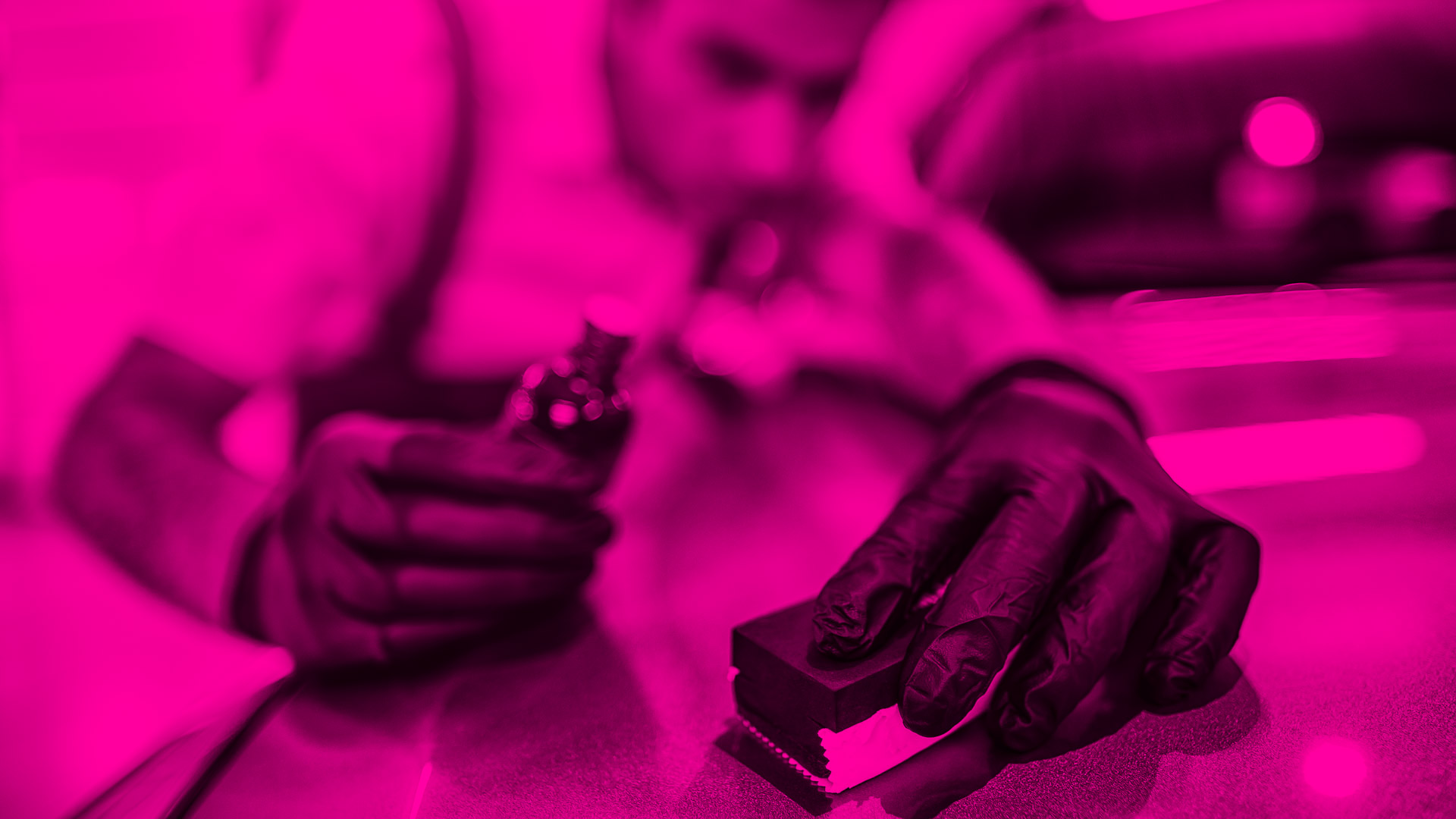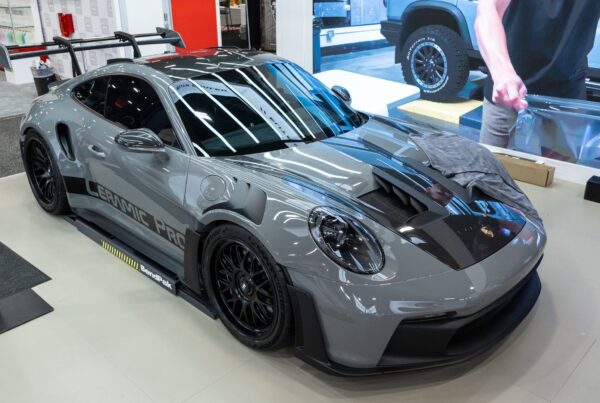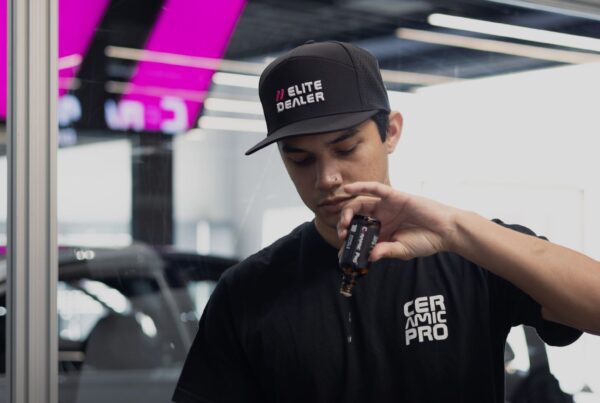The difference between fact and fiction isn’t always clear. In the automotive aftercare industry, there are many manufacturers who prescribe to the Liberty Valance Effect of marketing – “when legend become fact – print the legend”. One of the biggest selling points about the growing segment of nano ceramic coating for cars is the ability to fill microscopic imperfections found in paint. But that doesn’t mean fixing paint damage.
Nano ceramic car coating is an exceptional product. They can protect and enhance the gloss or matte finish of a paint job, carbon fiber materials, and plastics. But it’s important for automotive enthusiasts to understand, that the myth that ceramic DIY coating products repair and enhance a car’s paint is 100% fiction. Heck, even professional grade Ceramic Pro 9H coatings aren’t that magical. For optimal results, paint correction or fixing the vehicle’s paint through buffing is recommended.
The fact of the matter is that while yes, a car’s paint finish always looks better after a ceramic paint coating is applied, the protective coating is not doing everything that most believe it does. So, let’s dive into this topic – and explain why it’s so crucial to fix any paint damage – from marring to minor spider webbing or swirl marks, prior to applying car wax, paint sealant, DIY ceramic coating, or professional nano ceramic coating.
What’s the Purpose of a Ceramic Coating for Cars?
The purpose of ceramic coating, whether you do it yourself or take your car to a detailed to get it done, is to protect whichever surface it is applied. When applied to porous materials, nanotechnology within the coating will penetrate tiny imperfections and scratches, leading to the false belief that ceramic coating fixes your car’s paint.
On the contrary, any large scratches or swirl marks might be filled with the coating, but the visible damage is not repaired – in fact, a ceramic coating will make imperfections like this even more clearly visible.
Below, we will explain why ceramic coating tends to highlight your car’s blemishes, how you can go about properly fixing swirl marks and scratches, and how to apply ceramic coating to recently repaired paint to reduce the chances of paint imperfections happening again.
Do Ceramic Coatings Fill Scratches?
The short answer is yes. The properties of ceramic paint coating make it so that it seeps into swirl marks and scratches on your car’s vehicle. This does not actually repair the paint finish, though, and does not even visually hide the damage, unless the damage is extremely small.
Ceramic coating is fully transparent and microscopic, hence the “nano” in nanoceramic. The idea with this is that the quartz particles inside ceramic coating are so small that they bond together while inside a scratch, but they do not actually bond to the car itself to repair it or even fill it properly, like a polish or cutting compound.
How Can Swirl Marks and Small Scratches be Repaired by Polish?
Polish is a substance which is gritty and cuts the clear coating of a car’s paint until both the swirl mark and scratch matches the thickness of the surrounding paint. The clear coat is removed while smaller scratches are filled with the residue clear being cut by the polishing compound. This technique is often referred to as ‘leveling’.
This is the same as using something like low-grit sandpaper to repair a swirl mark whilst not damaging the car’s paint. If you can feel a scratch through your fingernail, it must be removed with sandpaper which is best done by professionals with experience in paint repair, like a detailer.
Effects of Ceramic Coating on Your Car’s Paint
Most car owners would say that they use ceramic coating to protect their car’s paint from debris, chemicals, harsh outdoor conditions, and more. There is a difference between protecting the car’s paint and physically repairing the car’s paint, though.
Since ceramic coating is meant to do the former, it will end up amplifying swirl marks and scratches after hardening and curing. The same property which amplifies imperfections enhances your car’s shine and paint gloss as well. This is sometimes called the magnifying effect – where the glass coating essentially accentuates the condition of a coated vehicle.
Overall, ceramic coating makes caring for your car’s paint easier. Here are several specific things that ceramic coating helps with:
Scratch-Resistant: Ceramic coating is scratch-resistant, but not scratch proof. The higher quality of a ceramic coating you use, the more resistance your car’s finish will have to scratches, while small scratches can even be buffed out entirely.
Protect from Salt Damage: Due to salt’s corrosive nature, it inevitably eats away at your car’s clear coat whenever it is left on your car’s surface, which is especially relevant in areas with cold weather.
UV Protection: One of the biggest causes of a car’s paint being damaged is contact with UV rays from the sun. UV rays emitted by the sun contain a small percentage of radiation which heats your car’s surface and eats away at your car’s clear coat, eventually damaging the surface underneath.
Resistance to Corrosion: Your car is often exposed to corrosive material in the form of chemicals, acid rain, bird dropping, bug splatters, etc. that eat away at your car’s clear coat and eventually damage your car’s paint. A nano glass coating, unlike waxes, provides a hardened layer which acts to protect against any potential corrosion.
Hydrophobic Properties: It could be argued that the most popular attribute of a ceramic coat is the ability to sheet water. This is known as having hydrophobic properties. This is the flat, smooth, slippery nature of a ceramic coating repels water and makes it difficult for anything to stick to it, such as debris or dirt. Also, this makes it much easier to clean, since it is easy to wipe off anything on the surface without worrying about anything being engrained.
Car Ceramic Coating Effects on Scratches and Swirl Marks
Scratches – or thin etchings in your car’s paint surface are caused by many sources but are nearly identical in principle. It’s an etching in the paint surface – that is Swirl marks, on the other hand, are slightly more complicated. These are super fine scratches that are not visible unless looked at from a certain angle and in certain conditions, such as from under light from streetlamps or sunlight.
Swirl marks are often easier to see on flat surfaces such as trunks, hoods, or roofs. They also often appear on doors and fenders. Swirl marks are often amplified on dark vehicle’s exterior, due to the contrast.
Despite their name, swirl marks are not only circular. While they most often appear circular, they can also appear vertically, horizontally, or diagonally.
How are Swirl Marks Generated?
In most cases, swirl marks appear after washing your vehicle and drying it off with a towel that has microscopic particles of dirt and dust on it or using a used mitt at the car wash. Therefore, it is always recommended to use the two-bucket method when washing your car.
One myth is that if you use a microfiber towel, you won’t generate swirl marks. This, unfortunately, is not true. Even though microfiber towels help reduce the potential of swirl marks appearing, they still can appear. Regardless, it is still safer to use a clean microfiber cloth whenever drying a vehicle with a non-protected clear coat.
Other common causes of swirl marks appearing includes:
- Buffing or polishing with used/dirty pads
- Using aggressive cutting polish compounds or paint cleaners
- Using dirty chamois or polyester applicators
- Using a dirty duster for dusting your car
- Washing your car at automatic car washes
- Not rinsing off your car before washing it
- Covering your car with a dirty cover
Can Swirl Marks be Prevented?
The truth is it is impossible to eliminate the risk of getting swirl marks on your car completely. There are, however, several things you can do to reduce the likelihood of it occurring.
Wash Your Car Using the Two-Bucket Method
Rather than getting your car washed at an automatic car wash, it is much safer to hand-wash your car with the two-bucket method of washing. Watch the related video to learn about exactly how to do this. This is one of the best ways to prevent swirl marks.
Thoroughly Rinse Your Vehicle After Washing
Before drying your vehicle, rinse it off completely using clean water. This will remove any small excess debris that might engrain into your car while drying and thus causing swirl marks or scratches.
Remove Water from Your Car’s Surface Using a Microfiber Drying Towel
If you often end up with standing water on your vehicle’s surface, it is worth investing in a dedicated microfiber drying towel. If it is completely clean, place it on your vehicle and let it do its thing.
To Reduce Scratches – Add a Professional Grade Ceramic Coating
While auto ceramic coating is not scratch proof, they are scratch resistant and thus will reduce the risk of your car getting a swirl mark. By providing a thin yet strong flat, smooth, and hydrophobic protective layer, it will repel water and contaminants and be easy to clean and dry off with clean microfiber cloths.
However, this is where investing in a professional grade solution – like our 9H ceramic coating is worth it’s weight in gold. Even the best DIY nano coatings can’t match the longevity, durability, and protective qualities of the extensive line-up of Ceramic Pro products.
Our coatings are formulated for specific materials or substrates. This means, that we use a specifically formulated product for vehicle paint, plastics and textiles, interior cloth and leather, wheels, and even paint protection film or vinyl wraps. Each product is applied by certified auto salons and detailers, is sold in packages with each coming with a warranty.
DIY coatings simply can’t offer this level of protection or peace of mind. If you’d like to keep your car’s factory paint in optimal condition, reduce the potential of scratching, and improve the overall look and appeal of your ride, click the button to request a free estimate for Ceramic Pro 9H nano coat of protection.







